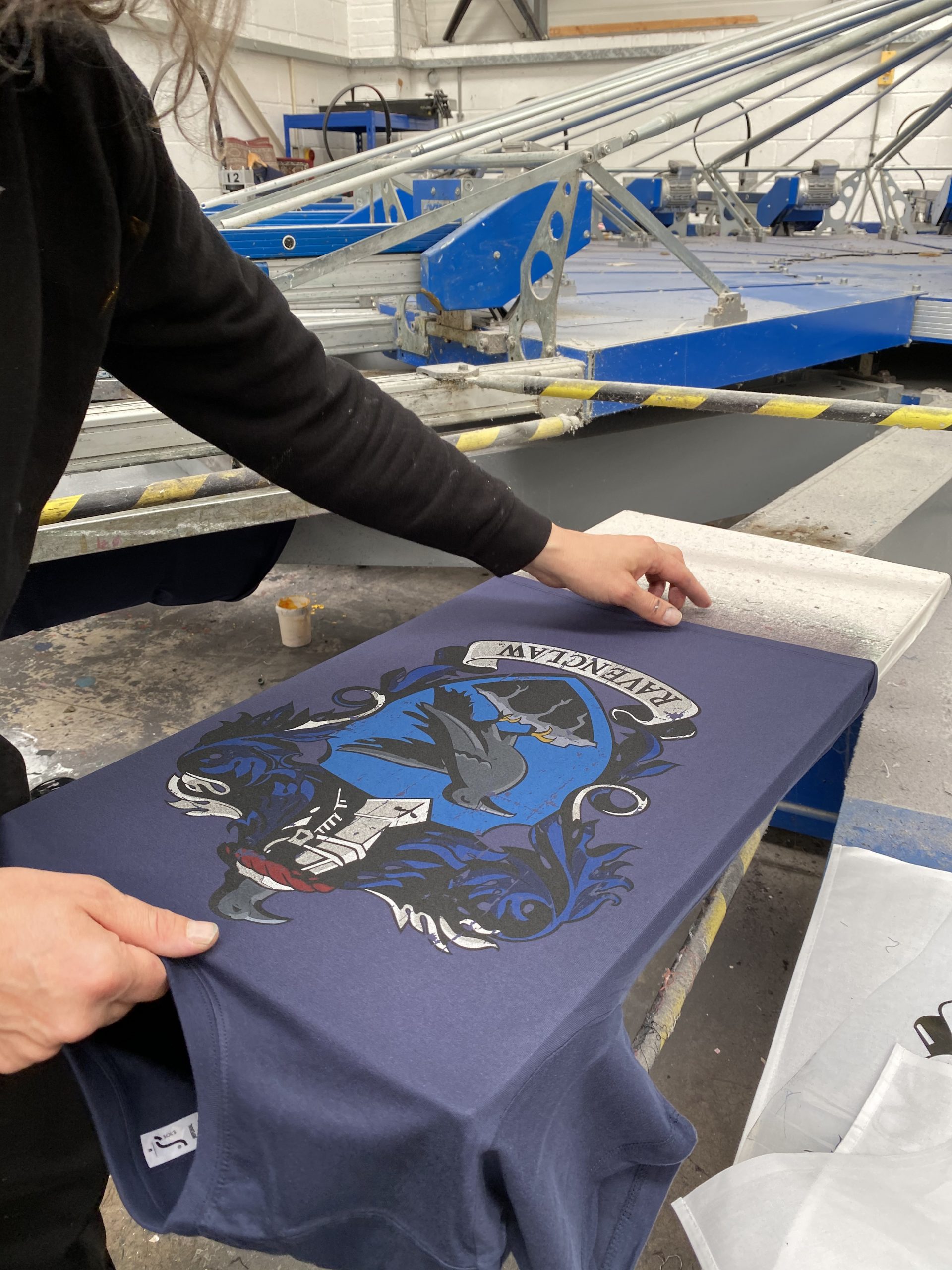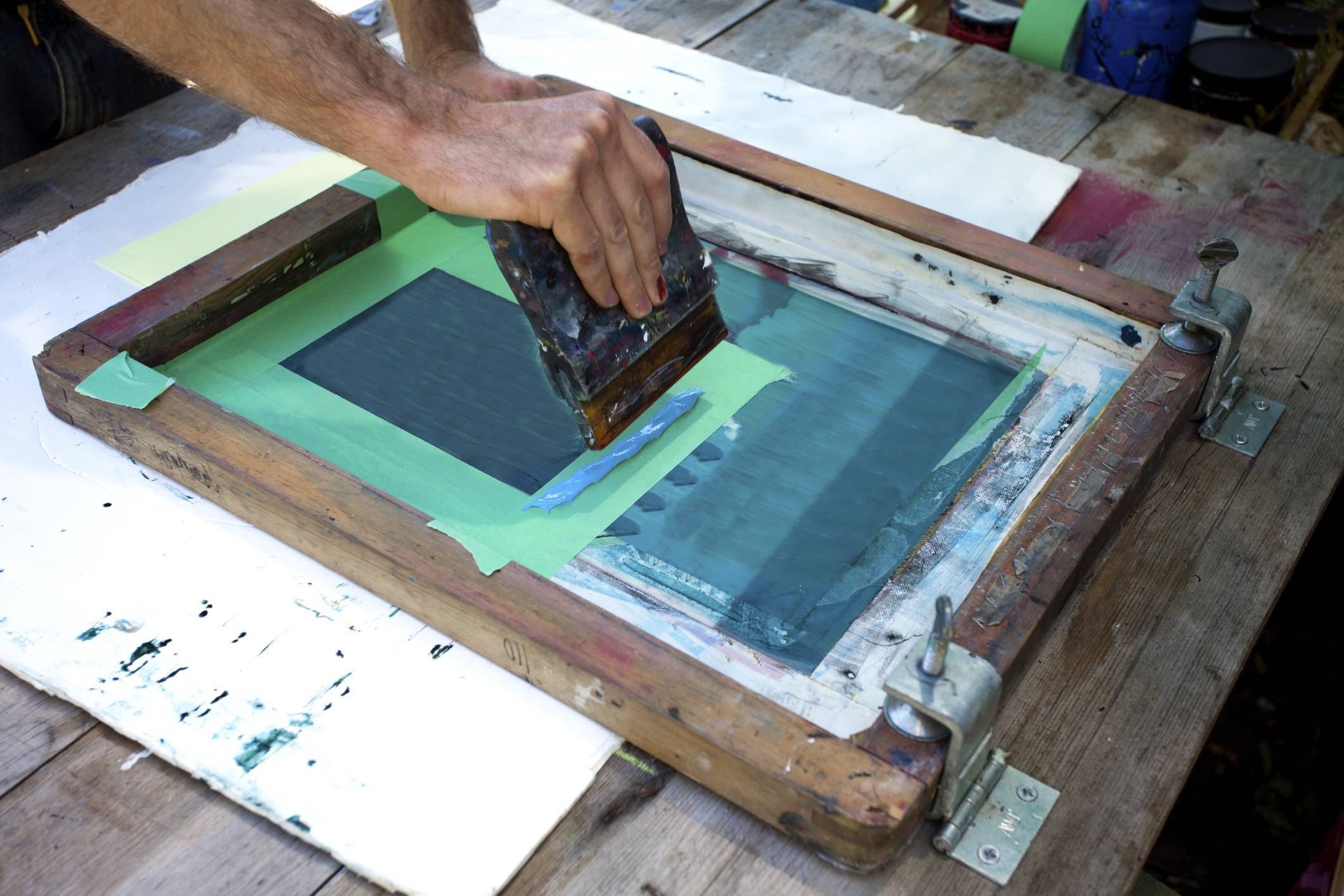From Layout to Delivery: Mastering the Art of T-Shirt Screen Printing
The journey from design to delivery in t-shirt screen printing includes a series of essential stages that demand attention to detail and tactical planning. It begins with recognizing the subtleties of your target market, adhered to by the option of appropriate products and the prep work of artwork that satisfies high requirements. As the process unravels, challenges in top quality control and logistics can emerge, potentially impacting the last end result. Checking out these complexities reveals not just the intricacies of screen printing but likewise the crucial techniques that can raise a brand's standing in an affordable market.
Understanding T-Shirt Screen Printing
Recognizing T-Shirt screen printing includes identifying a flexible and commonly used approach for transferring styles onto fabric. This strategy uses a mesh and a pattern screen to use ink onto various fabric products, primarily cotton and polyester blends. The process begins with the creation of a screen that includes the wanted layout, which is then carefully straightened on the textile.
Ink is pressed via the screen's open areas using a squeegee, permitting for exact application of shade. This technique is preferred for its capacity to produce vivid, lasting prints that hold up well to cleaning and put on. In addition, screen printing can accommodating both complicated and basic designs, making it a favored selection for custom-made clothing, advertising products, and even creative jobs.
In addition, screen printing offers scalability, making it appropriate for both small batch orders and massive manufacturings. While preliminary arrangement costs may be greater compared to various other printing methods, the performance and longevity of screen printing commonly justify the financial investment. On the whole, comprehending the fundamentals of Tees screen printing is essential for anybody seeking to take part in this popular type of material decor, whether for individual projects or commercial undertakings.
Conceptualizing Your Design
Conceiving your style is an important step in the Tees screen printing procedure, as it establishes the foundation for the entire task (T-Shirt Printing). This phase entails producing concepts that reverberate with your target market while making sure that the layout straightens with the brand's identity and message. It is vital to start by checking out themes, color pattern, and graphics that mirror the desired aesthetic
Sketching first concepts can be beneficial, permitting an aesthetic representation of ideas prior to finalizing the layout. Think about making use of typography, imagery, and format in a method that catches attention and connects effectively. Furthermore, it is vital to expect the printing technique that will be employed, as this can influence design intricacy and color choices.
Participating in conceptualizing sessions with staff member or seeking responses from prospective consumers can likewise boost the conceptualization procedure, offering varied point of views that improve the design. Inevitably, a well-balanced layout not only improves the aesthetic charm of the Tees but likewise cultivates a connection with the target market, driving passion and potential sales. Dedicating time to conceptualize your design can lead to a successful screen printing outcome.
Picking the Right Products

The weight of the material, normally measured in grams per square meter (GSM), influences the drape and general feeling of the Tee shirts. Larger fabrics may supply a much more superior appearance, while lighter choices fit for sportswear. Appearance also contributes; smoother textiles have a tendency to yield sharper prints, while textured surface areas can develop unique visual effects.
Furthermore, consider the environmental impact of materials. Organic cotton and recycled polyester are getting popularity among eco-conscious consumers. Ultimately, selecting the right materials entails balancing aesthetic appeal, functionality, and sustainability, ensuring that the Tee shirts not only looks excellent yet additionally satisfies the expectations of your target audience.
Preparing Artwork for Printing
Preparing artwork for T-shirt screen printing needs mindful interest to detail to assure that the final print accurately mirrors the designated design. The primary step is to produce a high-resolution digital file, preferably in vector layout, as this permits scalability without loss of quality. Typical software used for this objective consists of Adobe Illustrator and CorelDRAW.
Next, validate that all text is transformed to outlines or rasterized to prevent font problems during printing (10:9 Design Business Branding Solutions). Furthermore, it is vital to validate that the color setting is readied to CMYK, as this straightens with the printing process. Pay close focus to shade matching; making use of Pantone shades can aid accomplish consistency throughout various prints
Think about the measurements of the print location and maintain navigate to this website appropriate margins to avoid style cutoff. It's also sensible to consist of registration marks for positioning throughout the printing procedure. Business Branding Services. Demand an evidence from the printer to visualize the final item before mass production. This step is essential for determining any prospective concerns, assuring that the printed Tees satisfies the preferred high quality and layout requirements. Proper prep work of artwork substantially affects the overall success of the screen printing task
Grasping the Printing Process
Mastering the printing process is necessary for attaining high-quality cause Tees screen printing. This stage involves several significant actions that directly affect the last product. The primary step is establishing the printing press accurately. Proper enrollment of screens warranties that shades straighten properly, avoiding misprints and guaranteeing a professional look.
Next, picking the best ink is necessary. Different ink kinds, such as plastisol or water-based, offer numerous finishes and resilience. Recognizing the material composition of the Tee shirts also assists in choosing compatible inks.
When it concerns the real printing, managing the squeegee pressure and angle is important. Constant stress will produce also ink circulation, while the angle affects the flow and insurance coverage. In addition, changing the rate of the printing press can affect the ink's curing procedure, which is basic for guaranteeing sturdiness.
High Quality Control and Finishing
After the printing procedure is full, executing effective quality assurance measures ends up being essential to confirm that each Tees meets the preferred standards. Quality assurance includes an organized strategy to checking each garment for defects, confirming that the print top quality, shade precision, and fabric stability line up with the specs set during the style stage.

The primary step in high quality control is a thorough visual assessment. This entails monitoring for typical problems such as misalignment, ink smudges, or fading. Any kind of Tee shirts that does not fulfill the high quality standards must be addressed promptly, either through reprinting or repair service.
Along with aesthetic checks, it is necessary to perform wash examinations on an example of published t shirts to assess the longevity of the inks and the total long life of the design. These tests aid verify that the print will certainly keep its vibrancy and honesty after numerous laundries, an essential variable for client fulfillment.
Ending up touches, such as thread trimming and the application of treatment tags, also play a substantial duty in quality assurance - Screen Printing. By focusing on these facets, companies can enhance the general presentation of their items, inevitably causing a much more enjoyable customer experience
Packaging and Shipment Solutions

To attain excellent packaging, consider utilizing environment-friendly products that line up with sustainability fads, such as recyclable poly bags or biodegradable boxes. Each Tees ought to be neatly folded up and positioned in protective covering to stop creasing and potential damage throughout transit. Consisting of a well-known insert or care directions can even more individualize the experience, cultivating customer loyalty.
When it comes to shipment, picking a dependable shipping partner is important. Examine alternatives based upon tracking, cost, and speed abilities. Offering multiple delivery techniques can provide to various client requirements, from standard to expedited shipping.
Frequently Asked Questions
What Are the Usual Mistakes Beginners Make in Screen Printing?
Usual blunders newbies make in screen printing consist of incorrect screen preparation, poor ink mixing, wrong direct exposure times, insufficient healing, and disregarding to examine prints. These mistakes can bring about low quality and unsuitable lead to end products.
Just How Can I Protect Against Ink From Bleeding During Printing?
To stop ink blood loss during printing, assurance appropriate screen stress, use suitable emulsion thickness, select the right ink consistency, maintain ideal curing temperatures, and prevent straining the screen with excessive ink throughout application.
What Types of Inks Are Best for Different Fabrics?
Selecting inks based on fabric type is important. Water-based inks are ideal for cotton, supplying softness. Plastisol inks suit synthetic textiles, supplying sturdiness. Discharge inks effectively mix with all-natural fibers, guaranteeing vivid colors without jeopardizing fabric integrity.
How Do I Pick the Right Screen Mesh Count?
Choosing the appropriate screen mesh matter relies on the preferred print information and ink type. Business Branding Services Abilene. Higher mesh matters produce finer details, while reduced matters assist in thicker inks. Evaluate material kind and style complexity for ideal outcomes
Can I Make Use Of Screen Printing for Little Batch Orders?
Yes, screen printing can be effectively utilized for little set orders. This method permits for high-quality results and in-depth layouts, making it a viable option for custom-made garments, advertising products, or restricted edition runs.
Understanding T-Shirt screen printing includes recognizing a versatile and commonly used method for transferring layouts onto material. While preliminary configuration costs may be higher compared to various other printing approaches, the efficiency and durability of screen printing commonly validate the financial investment. Preparing art work for T-shirt screen printing requires careful attention to information to ensure that the final print accurately reflects the designated layout. Understanding the printing process is important for accomplishing premium outcomes in T-shirt screen printing. Typical errors novices make in screen printing include incorrect screen preparation, inadequate ink blending, inaccurate exposure times, not enough curing, and disregarding to examine prints.